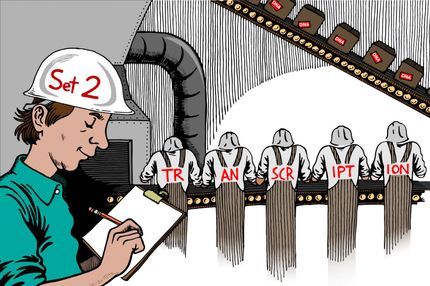Gliomas exploit Immune Cells of the Brain for Rapid Expansion
Advertisement
Gliomas are among the most common and most malignant brain tumors. These tumors infiltrate normal brain tissue and grow very rapidly. As a result, surgery can never completely remove the tumor. Now, the neurosurgeons Dr. Darko S. Markovic (Helios Klinikum Berlin-Buch) and Dr. Michael Synowitz (Charité) as well as Dr. Rainer Glass and Professor Helmut Kettenmann (both Max Delbrück Center for Molecular medicine, MDC, Berlin-Buch), have been able to show that glioma cells exploit microglia, the immune cells of the brain, for their expansion.
Microglial cells are the immune cells of the brain/central nervous system. They constantly screen the brain environment. On their surface they use sensors to detect changes in their environment due to brain damage or infections. An important family of these sensors are Toll-like receptors (TLR).
However, microglia do not attack glioma cells. On the contrary: they support the growth of the tumor and, thus, make the disease worse. Together with researchers in Warsaw, Poland, Amsterdam, The Netherlands, and Bethesda, USA, the researchers in Berlin have been able to show how the immune cells promote the tumor growth.
Microglial cells are attracted toward the glioma cells and gather in and around the tumor in large numbers. Interestingly, gliomas consist of up to 30 per cent of microglia, especially at the tumor edge.
Gliomas release certain enzymes, metalloproteases, which digest the extracellular matrix, and also dissolve the ties between cells. However, the metalloproteases are produced and released as inactive precursor protein which need to be cleaved to be activated. This cleavage is accomplished by another enzyme, which is produced by the microglial cells.
This enzyme is anchored in the membrane and was therefore named membrane type 1 metalloprotease (MT1-MMP). MT1-MMP activates the metalloproteases which clear the way for the glioma cells and allows them to infiltrate normal brain tissue and expand very rapidly.
Normally, microglial cells do not produce MT1-MMP. However, the glioma cells manipulate the microglial cells by stimulating microglial TLR which trigger the expression of MT1-MMP.
The researchers could confirm their data from petri dish in mice. "Those mice, in which we had knocked out the MT1-MMP gene or a crucial gene for TLR signalling, did attract fewer microglial cells and the tumor grew much more slowly", explains Professor Kettenmann.
They could also demonstrate that MT1-MMP was present in tissue from glioma patients. Remarkably, the gliomas with high level of microglial MT1-MMP were also more aggressive. Moreover microglial cells were more abundant in tissue sample from the tumor edge as compared to the center of the tumor.
Glioma cells themselves do not produce MT1-MMP. However, when the researchers experimentally over expressed MT1-MMP in glioma cells, they died.
The researchers hope, that interfering with TLR receptors or their intracellular pathways might reduce the rapid expansion of glioma cells. Professor Kettenmann: "Microglia are a new target for glioma researchers."
Original publication: D. S. Markovica et al.; "Gliomas induce and exploit microglial MT1-MMP expression for tumor expansion"; PNAS, Early Edition


























































